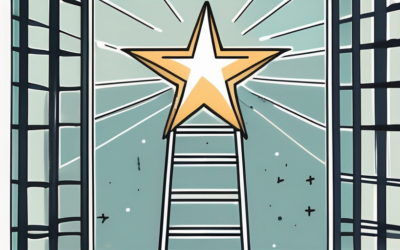Working in a positive environment is so much more than just having happy employees–it also has tangible benefits for the business. I have seen firsthand how an open, constructive error culture can unlock new levels of success.
Through increasing trust and collaboration between staff to foster innovative ideas, encouraging risk-taking, and enabling faster learning cycles that drive productivity gains & ultimately, long-term growth.
We all know how damaging blame culture can be in the workplace, but what if we could replace it with a constructive error culture? Instead of assigning fault and pointing fingers, let's discover practical strategies for engaging constructively.
Join us as we explore insights into feedback techniques that foster collaboration and learning!
Develop Proactive Reporting
The first step in creating a constructive error culture is to develop proactive reporting mechanisms. This means encouraging employees to speak up about errors before they become more significant problems. This can be a challenging first step if there is a lack of trust within the team early on. For this to succeed, be sure you are modeling the behaviors you want from the team. Promoting a proactive reporting culture creates an environment where errors are seen as opportunities for growth and learning. This line of thinking goes against the traditional “shame and blame” shared by leadership over flagged mistakes.
Corrective Action, it's not What you Think.
In a constructive error culture, corrective action is seen as an opportunity for learning and improvement rather than punishment or blame. When an error occurs, the focus is on identifying the root cause of the problem and developing strategies to prevent similar errors from happening in the future. Leading a solution-focused charge identifying what needs to be fixed to progress, not a problem-focused shame party identifying who did what wrong.
What does Corrective Action Look Like?
Here are some ways that corrective action might look in action within a constructive error culture:
- Open communication In a constructive error culture, open communication is encouraged, and individuals are empowered to speak up when they identify errors or potential issues. This allows for early identification and resolution of problems, reducing the likelihood of more severe errors.
- Root cause analysis When an error occurs, a thorough root cause analysis is conducted to identify the underlying cause of the problem. This helps to ensure that corrective action is targeted at the root cause. And not just the symptoms of the problem.
- Collaborative problem-solving Corrective action is typically a collaborative effort, with teams working together to develop solutions and strategies to prevent similar errors in the future. This encourages shared responsibility and ownership of the process and helps build a continuous improvement culture.
- Training and education In a constructive error culture, training, and education are essential components of corrective action. Individuals are provided with the knowledge and skills they need to identify and prevent errors. Training is seen as an ongoing process rather than a one-time event.
- Positive reinforcement Rather than focusing on blame or punishment, corrective action in a constructive error culture is often accompanied by positive reinforcement. Individuals are recognized for their contributions to the problem-solving process; successes are celebrated to encourage a culture of continuous improvement.

Encourage Learning and Collaboration
To create a company or team culture that leads to learning and collaboration, you must encourage learning and collaboration in all you do. You, as their leader, need to be curious to learn from your team and face obstacles as opportunities.
Ask yourself, “Could you ask for collaboration on challenges you face and task your teams in pods or groups to approach the projects handed down or across departments?” Find ways to include and not exclude those on your team. Trust them to be successful. Keep them close; if they fail, they aren't going to fail in catastrophic ways out of the gate while they are building that trust muscle.
This type of open and vulnerable behavior models the behavior you expect from your team. This means allowing employees to learn from their mistakes and collaborate to develop new solutions outside of your direction. Again, trusting them to face and solve those opportunities through collaboration, keeping a close eye, and being ready to participate if they get stuck.
By creating a culture of learning and collaboration, you create an environment where mistakes are seen as valuable opportunities for growth and innovation.
How to Hold Space for a Constructive Error Culture
Creating a safe space for honesty and vulnerability is critical to building a constructive error culture.
This means creating an environment where employees feel psychologically safe admitting mistakes, seeking feedback, and asking for help. Creating a safe space for honesty and vulnerability creates an environment where mistakes are seen as normal and necessary for success. Again, modeling the behavior you expect from your team will come into play.
Team members, and for that matter, people generally trust what they see, not what you say.
They will participate if they see you flagging your mistakes and asking for collaboration in finding a solution. If you lead with honesty and vulnerability, they will follow suit when they are in the same position.
Approach mistakes with compassion, kindness, and empathy. Work at remembering how difficult it can be to share mistakes with leadership and co-workers openly. Normalize the experience as soon as possible, and you'll have better relationships and a stronger bond within your team than you ever could have imagined.
Outside of family, nobody will really care about you
until they know how deeply you care about them!
Engage Stakeholders in the Process of Mistake-Making and Correcting Errors
This is a tall ask from anyone who isn't the owner or a part of the team's leadership. However, the phrase “Culture eats strategy for breakfast,” thank you, Peter Drucker is for a very good reason; because it does. Culture continues to be synonymous with successful companies.
Knowing this fact should be a solid motivator to involve everyone in the organization, from leadership to front-line employees, in identifying and correcting errors. Engaging stakeholders in the process creates a culture of collaboration, shared responsibility, and mutual learning.

Photo by Bonnie Kittle on Unsplash
Ready to Leave Blame and Shame behind?
Ultimately, it is essential to establish a constructive error culture in the workplace that encourages employees to take risks and set goals without fearing punishment for failing. Moving from a blame culture requires leadership buy-in and commitment to ensuring mistakes are viewed as learning opportunities.
Structuring your error environment, as outlined in this post, can give you the tools to create a work setting that establishes team member growth and development. And having a supportive program like CorEthos' customized cultural services ensures everyone is continuously building their skills and confidence.
Learn how to make changes within your organization.
Contact CorEthos today for resources, support, and personalized guidance.
Let's Connect!



